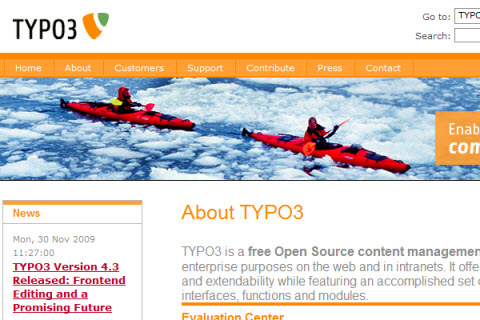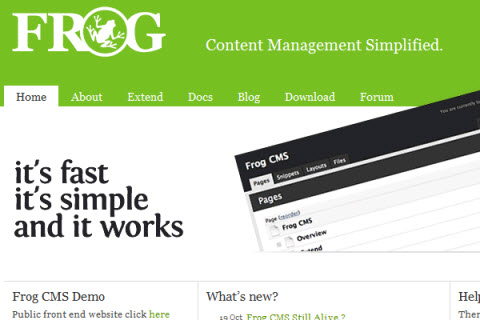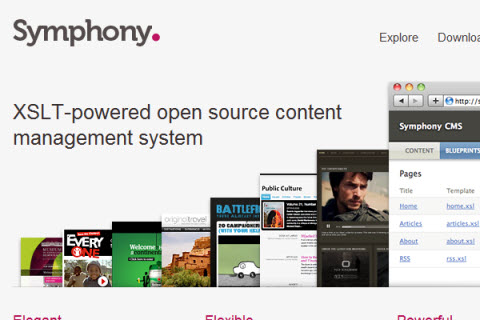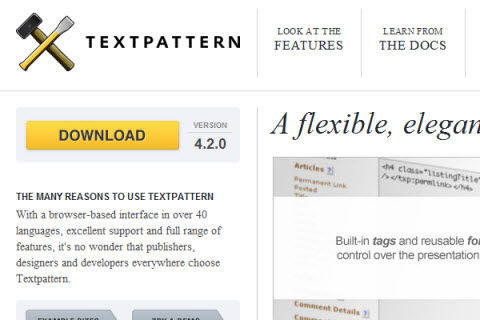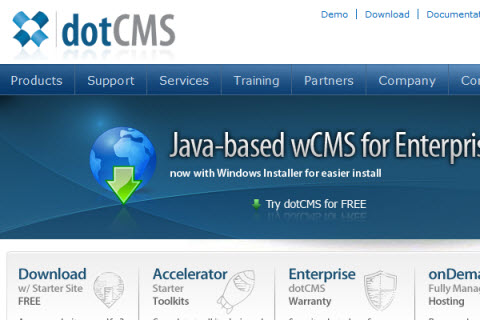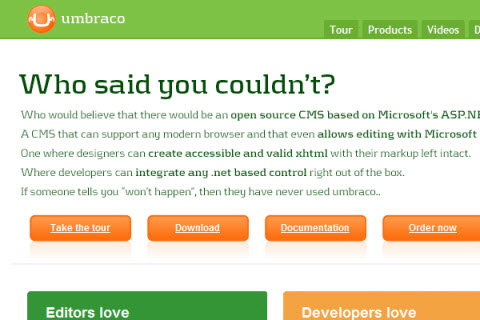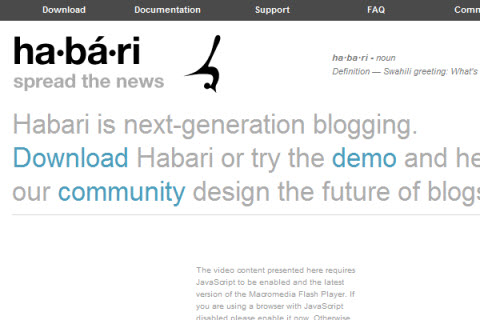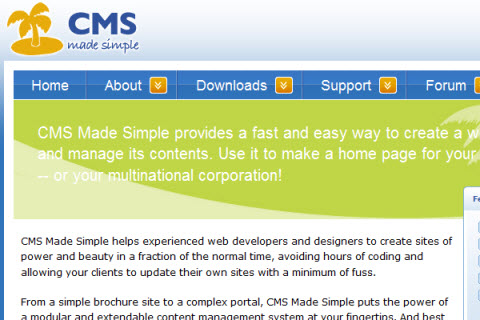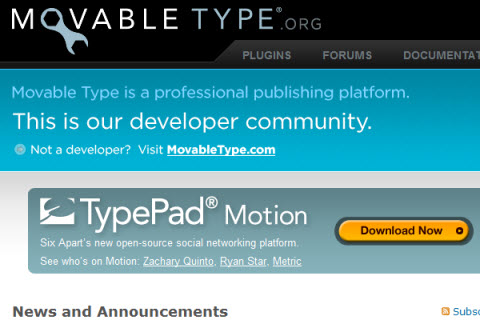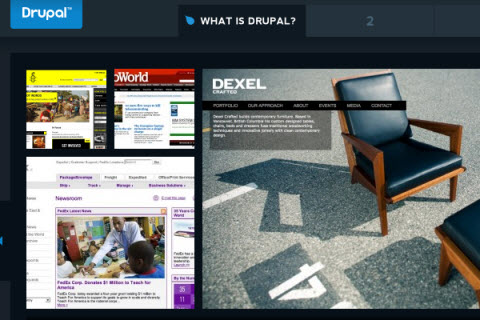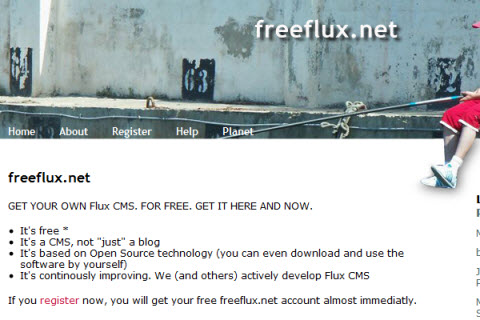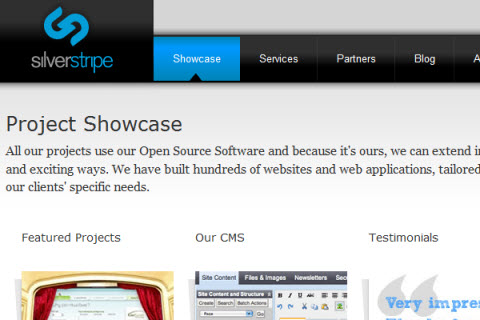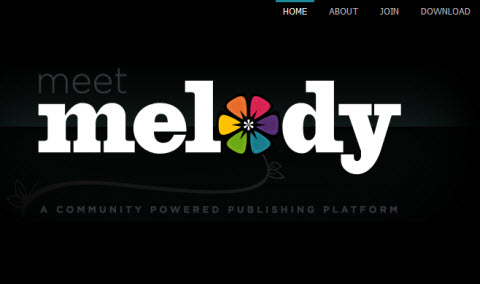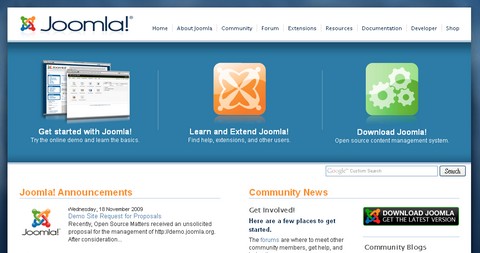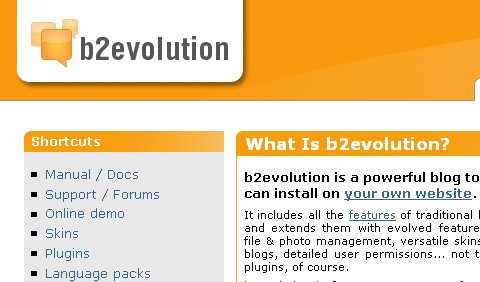The Best Open Source CMS Mainly Used for Blogging
All websites require their content to showcase in a very professional manner. Since it is very hard for a single person or team to do it by himself/herself, they look for help in designing and maintaining the websites. This is where the importance of CMS systems props up. These systems not only help in creating a good website but also help in managing and updating the website. Given below are some of the very Best Free CMS which are Mainly used for Blogging Purposes.
1. Typo 3
A CMS used by the multinational company Philips, Typo 3 is known for its efficiency. It offers amazing features for content management. However, the only point to be noted is that it is not very simple to use, especially as an admin. There are more than 1000 tutorials present to guide you, but reading and understanding these tutorials takes dedication and valuable time. The result of the hard work put in by the Administration side is seen as it takes the end users roughly an hour to set up all the required tools. It is supported by PHP and supports most operating systems. Some of its features include an internal search engine, editing on page etc.
2. Frog CMS
Unlike Typo, Frog CMS is known for its simplicity and speed. It‘s features include on page editing, templating code. It is extendable and includes an API and you can also add images and pages to the data. However, this software is involved and is not recommended for newbies. By using Frog, you can be fully ready with a content solution within an hour. This is also supported by PHP and has RDMS like MySQL or SQLite.
3. Symphony
Symphony is an Open source CMS which can be described in 3 words –standard driven, simple and modular. It has discrete components which can configured fully to suit your needs .All the features are independent of each other making it perfect for modifications and additions. This CMS is lean, small and precise. It is supported by XHTML,CSS ,XML etc.
4. Textpattern
Textpattern is an very elegant and user –friendly CMS. It is supported by CSS and XHTML and has hundreds of plug-ins that are ready to be used. A notable feature is that it has built-in tags which decide how the dynamic content will be displayed. The admin interface is efficient, minimalist and clearly labelled .It also has a lot security features like anti-spamming system .It is also very easy to manages it has a variety of features like up to date visitor logs ,unlimited categories of images ,files etc.
5. WordPress
WordPress focuses on speed, simplicity and great user experience. WordPress is designed in such a manner so as to give the user absolute control of the webblog. WordPress has control tolls, which enable to restrict the amount of changes that a visitor can make while visiting your blog. Also whenever you update your blog the is no need to rebuild your page. It has the template editor tool which allows you to improve the presentation of your blog. WordPress can moderate comments from certain addresses, comments with particular words in them etc.
6. DotCMS
DotCMS is one such software which covers a wide variety of needs. It does so convincing set of features which can be tailored to suit your needs. It offers site-wide templating, inline content editing, MP3 player streaming, content versioning etc. In addition to the above mentioned features, it also offers “on demand installsâ€, thereby improving its commercial use. However, the admin screens require time and patience to figure out the details. It uses Java technology and supports OS like Windows and UNIX .It has a setup time of roughly 60 minutes.
7. Umbraco
Umbraco is open source software which is one of the top contenders for the best ASP.net CMS software. This software focuses on and has achieved high standards in accordance with CSS and XHTML. It has a very short setup time – a mere 10 minutes. Its main features include a compact template engine, scheduled publishing and support for most net languages and Ajax frameworks. Its RDMS is MS SQL.
8. Habari
This free software is made after a thorough understanding of the blogging system. This software does not allow content spams or digg overloads to affect its functionality. It strongly favors standard , open and documented protocols. It is not a plug-in, but instead a core feature. It is supported by the PHP language and therefore enables the use of PDO which in turn enables proper statements for the interactions with the database. Its vulnerability to SQL injects attacks has been greatly reduced due to this
9. ocPortal
ocPortal is a very user-friendly CMS which offers a wide range of features .It major plus points are that its highly customizable , easy to use for admins and its out-of the box usability. It’s features include sophisticated tools like Theme Wizard, integration with many forums for increased efficiency, functionality is very high for all content , which includes articles, images etc. It does not hide any features from the users and is OSI-approved Open Source licence.
10. CMS Made Simple
CMS Made Simple is an open source (GPL) package, built using PHP that provides website developers with a simple, easy to use utility to allow building small-ish (dozens to hundreds of pages), semi-static websites. CMS Made Simple provides a mechanism for the website administrator to create and manage “pages”, their layout, and their content. CMS Made simple is unobtrusive. You can create a table based layout, or a fully validating XHTML/CSS layout.
11. Squarespace
Squarespace is specially designed for the creation of blogs .It has simple yet state of the art tools to help you set up and manage your website .Its blogging features are very diverse and they include spell checks, RSS , ATOM, XML-RCC pinging ,member registration, content management ,multiple authors, timed publishing dates and many more interesting features. A notable feature is that it has an internal search engine which helps you during the customization process of your website.
12. Movable Type
Movable type is an open source project aims at producing an open source version of the MTPP (movable type publishing platform) which is destined to become the core of all other movable products. It helps you understand your blog better through features like improved user interface, integrated asset manager for reusing , uploading and finding files like video and audio, gives you details about you blog performance and improves the aesthetic look of your blogs. It improves publishing through a WYSIWYG editor ,cross blog aggregation ,advanced blog template languages ,paginated archives and many more features.
13. XOOPS
XOOPS is the short form for eXtensible Object Oriented Portal System .It serves as a web framework which can be used by large, medium and small sites. Depending on whether the site is small or large you can install XOOPS in different manners to include different modules like News, forum etc. The notable features of XOOPS are mainly that it is fully modularized, database driven , personalization , World wide support ,theme based skinnable interface and versatile group permissions system
14. Radiant
Radiant is one such CMS which is targeted at the small sites. It has a simple user interface which is elegant and centers around layouts, snippets and pages. It has a very flexible sit structure allowing you to arrange the pages in any order .In addition, Radiant has its own macro language called radius template language thereby making it simple to add content from other pages . It also has custom text filters and intelligent page caching. One more notable feature is that it is built on ruby on rails making it easy for the web developers to extend this software for other purposes
15. Drupal
Drupal is a very popular CMS which enables a single person or an entire community to easily manage ,organize and publish a variety of content on a particular website .With drupal one can register individual user accounts and maintain them ,can create new menus and manage already existing ones ,customize the website layout ,administer the system and perform logging. Drupal allows new features to be added i.e. you can extend Drupal with the help of plug-in modules. Using Drupal one can create a website, brochureware , blogs, forums and many more.It is supported by PHP and a database of PostgreSQL or MySQL .
16. Free Flux
Free flux is one such open source CMS which is known for the extensive feature they offer. Some of the features include static pages, galleries , can be used in different languages etc. It offers full control over the XSLT and CSS templates and has you can edit images in the browser itself .It supports XHTML and has a lot of useful plug-ins like spam protection ,RSS comments and feed and many more.
17. Silverstripe
Supported by PHP ,Siverstripe takes just 30 minutes to setup. It uses MySQL as a database and is supported by OS systems like windows and Linux. The major features of this CMS is that it has an online image editor and has a wide variety of widgets. Also it has an internal search engine and user defined forms .Though it is also used for blogging, it has designed to meet the needs of management. It reduced the size of uploaded images on the fly and gives support to drafts and features. It also has support for out of the box SEO and allows viewers to review and roll back.
18. Melody
Melody is an open source CMS which is highly extensible and customizable. Melody is different from Movable Type because there are a set of processes that assist the greater Movable Type and Melody communities to contribute fixes, features and changes more quickly and freely back to the core product. It includes a logging framework for the developers and administrators, improved user interfaces .It is supported by Microsoft OS, Oracle, MySQL etc.
19. Joomla
Joomla is an award-winning content management system (CMS), which enables you to build Web sites and powerful online applications. Many aspects, including its ease-of-use and extensibility, have made Joomla the most popular Web site software available. Best of all, Joomla is an open source solution that is freely available to everyone as well.
20. b2evolution
b2evolution is a powerful blog tool you can install on your own website. It includes all the features of traditional blog tools, and extends them with evolved features such as file & photo management, versatile skins, multiple blogs, detailed user permissions… not to mention plugins, of course. b2evolution is free, open-source software (GPL), runs on virtually any webserver featuring PHP + MySQL and is available in several languages.


